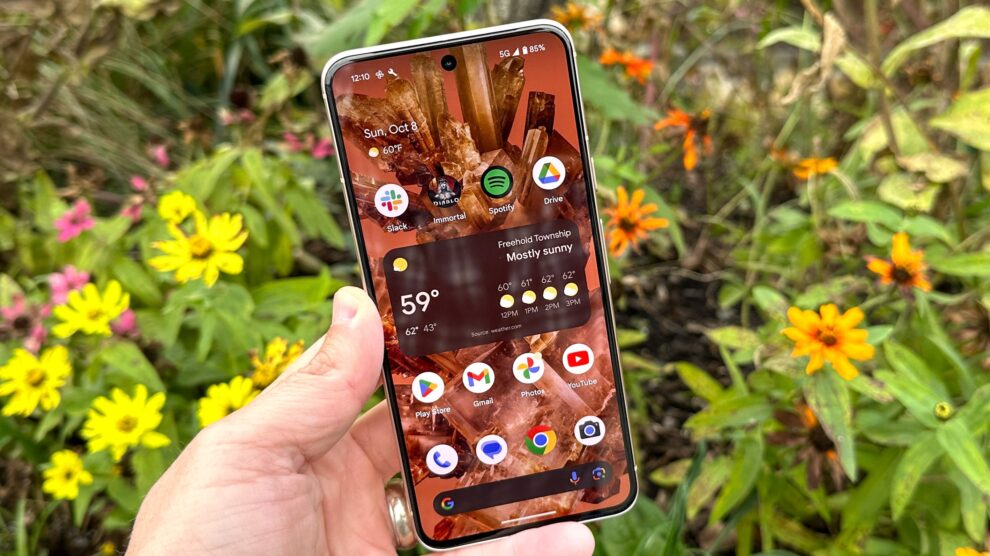A recently discovered critical security vulnerability in Google Pixel phones has raised alarms, prompting urgent action from both the tech giant and government agencies. This flaw in the phone’s firmware could potentially allow attackers to gain control of affected devices, posing a significant risk to user privacy and data security. Here’s what Pixel phone owners need to know and the steps they should take to protect their devices.

Understanding the Security Threat
The vulnerability, while not fully detailed for security reasons, is described as a firmware flaw that allows for “privilege escalation.” In simpler terms, this means an attacker could potentially gain higher-level access to the device than they should have, possibly even taking full control of the phone.
This type of security flaw is particularly concerning because:
- It affects the fundamental software that controls the phone’s hardware
- It could potentially bypass other security measures in place
- If exploited, it could give attackers access to sensitive personal data
Google’s Response: A Critical Security Update
In response to this discovery, Google has swiftly released a security patch to address the vulnerability. This update is crucial for all Pixel phone users, as it closes the security loophole and protects devices from potential exploitation.
Urgency for Government Workers
The severity of this security flaw is underscored by the U.S. government’s response. A strong warning has been issued to government employees who use Pixel phones, mandating them to update their devices by July 4th, 2024. The consequences of failing to update are significant – phones that haven’t received the patch may be rendered unusable for work purposes after this deadline.
What Pixel Phone Users Should Do
While the government mandate applies specifically to federal employees, the security risk affects all Pixel phone users. Here are the steps every Pixel owner should take immediately:
- Update Your Phone Immediately:trong>
- Go to your phone’s Settings
- Navigate to System > System update
- Check for available updates and install them
- Ensure your phone restarts after the update to complete the installation
- Verify the Update:
- After updating, return to the System update screen
- Confirm that your phone is up to date
- Check that the security patch level is current
- Enable Automatic Updates:
- To protect against future vulnerabilities, ensure automatic updates are enabled
- This setting is usually found in the System update section of your phone’s settings
Broader Implications for Android Users
While this particular vulnerability specifically affects Pixel phones, it serves as a stark reminder of the importance of device security for all Android users. Similar vulnerabilities could potentially exist in other Android devices, and updates for other phone models may be forthcoming.
Android users, regardless of their device brand, should:
- Regularly check for and install system updates
- Keep all apps updated to their latest versions
- Be cautious about the apps they install and the permissions they grant
- Use strong, unique passwords and enable two-factor authentication where possible
The Bigger Picture: Cybersecurity in the Mobile Age
This incident highlights several important aspects of our increasingly digital lives:
1. The Critical Nature of Software Updates
Many users view software updates as a nuisance, often postponing them for convenience. However, this security flaw underscores how crucial these updates can be. They’re not just about new features; they’re often addressing critical security issues that protect your personal information and the integrity of your device.
2. The Evolving Landscape of Mobile Security Threats
As smartphones become more central to our personal and professional lives, they also become more attractive targets for cybercriminals. This Pixel vulnerability is just one example of the sophisticated threats that mobile users face. Staying informed and proactive about security is more important than ever.
3. The Intersection of Personal and Professional Device Use
The government’s strong response to this vulnerability highlights the blurred lines between personal and professional device use. Many people use their personal phones for work-related tasks, which can create additional security concerns for organizations. This incident may prompt both individuals and organizations to reassess their policies around device usage and security.
Looking Ahead: Staying Secure in a Connected World
As we move forward, this security incident serves as a valuable lesson for all smartphone users. Here are some key takeaways to enhance your mobile security:
- Stay Vigilant: Regularly check for updates and news about potential security issues related to your devices.
- Diversify Your Security Measures: Don’t rely solely on your device’s built-in security. Consider using additional security apps, VPNs, and encrypted messaging services.
- Be Mindful of App Permissions: Regularly review the permissions you’ve granted to apps and revoke any that seem unnecessary.
- Backup Your Data: Regularly backup your important data to a secure, external source. This can protect you from data loss in case of a security breach or device failure.
- Educate Yourself: Stay informed about basic cybersecurity practices. Understanding potential threats can help you make better decisions about your digital security.
Conclusion: A Wake-Up Call for Mobile Security
The discovery of this critical vulnerability in Pixel phones serves as a wake-up call for all smartphone users. It reminds us that our mobile devices, which hold so much of our personal and professional lives, are also potential gateways for security threats.
By staying informed, keeping our devices updated, and practicing good digital hygiene, we can significantly reduce our risk of falling victim to such vulnerabilities. Remember, in the world of cybersecurity, prevention and prompt action are your best defenses.
Stay safe, stay updated, and take control of your digital security.










Add Comment